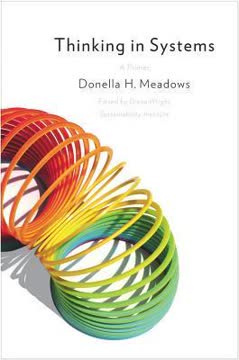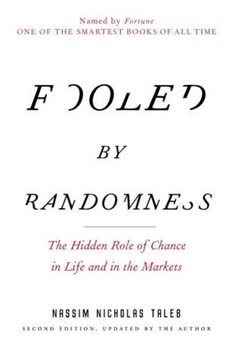Key Takeaways
1. Exercise Can Age You: Balance Performance and Health
Ultimately, as the tagline of Beyond Training says, this truly is the last book you’ll ever need in order to master endurance, health, and life.
Two Paths, Different Outcomes. The book contrasts two triathletes: Chad, who overtrains and neglects his health, leading to injuries and burnout, and Kirsten, who trains smart, eats well, and prioritizes overall well-being, achieving lasting fitness and a fulfilling life. This sets the stage for understanding how different approaches to exercise can have vastly different results.
Chad's Downfall. Chad's story serves as a cautionary tale. His relentless pursuit of endurance, combined with a poor diet and neglect of recovery, leads to joint pain, hormonal imbalances, and ultimately, the inability to continue the sport he loves. This illustrates the potential dangers of prioritizing performance over health.
Kirsten's Success. Kirsten's approach emphasizes balance. She incorporates high-quality interval training, mindful movement, and natural eating habits, allowing her to maintain a high level of fitness while enjoying a fulfilling social life and strong relationships. This demonstrates the possibility of achieving both athletic goals and overall well-being.
2. Master Your Heart Rate Zones for Efficient Training
But it is very important for you to understand that the human body is dynamic and flexible, and that zones should be used as guidelines, not as a means to shackle you to your training.
Beyond the Numbers. While understanding heart rate zones is crucial, the book emphasizes that the human body is not a machine that switches between fuel sources based on rigid zones. Instead, it's a dynamic system that uses a messy combination of energy sources at any given intensity.
Energy Systems. The book explains the three primary energy systems: oxidative (aerobic), glycolytic (anaerobic), and phosphagen. Understanding how these systems work and how they're influenced by diet, training, and hormones is key to designing an effective training program.
Personalized Zones. The book advocates for using five heart rate zones based on a percentage of lactic acid threshold, determined through field tests. This allows for a more personalized approach to training, taking into account individual fitness levels and goals.
3. Polarized Training: The 80/20 Rule for Endurance
Instead, most base training should be guilt-producingly easy, and the top-end, high-intensity training should be very mentally hard, not sort of hard.
Avoid the Gray Zone. The book identifies "black-hole training" as a common pitfall, where athletes spend too much time in a moderate-intensity zone that's not hard enough to elicit significant gains but still depletes energy stores and damages muscles. This type of training leads to stagnation and increased risk of injury.
Embrace Polarization. The book advocates for polarized training, where 80% of training is done at a low intensity and 20% at a high intensity. This approach, used by many elite endurance athletes, allows for building a strong aerobic base while incorporating enough high-intensity work for significant cardiovascular and muscular adaptation.
Time Commitment. The book acknowledges that polarized training, especially at high volumes, requires a significant time commitment. It questions whether this approach is realistic or desirable for recreational athletes who have other priorities in their lives.
4. Underground Tactics: Enhance Endurance with Less Strain
You have to leave behind the exhausting pursuit of exercise for the sake of exercise and discover the beautiful balance between health and performance.
Beyond Traditional Methods. The book introduces a variety of "underground" training tactics that can enhance endurance without excessive strain on the body. These tactics include overspeed training, underspeed training, electrical muscle stimulation (EMS), and hypoxic training.
Overspeed and Underspeed. Overspeed training involves training limbs to move faster than feels natural, improving muscle recruitment and nervous system function. Underspeed training, on the other hand, builds strength and force-production capability.
Advanced Techniques. EMS uses electrical impulses to stimulate muscle contractions, while hypoxic training involves exercising in low-oxygen conditions to improve oxygen uptake and utilization. These techniques can provide additional benefits with minimal training time.
5. Five Essential Elements: Build a Complete Training Program
It’s this kind of unorthodox, outside-the-box thinking that got me excited about Ben Greenfield’s new book, Beyond Training.
Beyond the Basics. The book emphasizes that a complete training program goes beyond swimming, cycling, and running. It identifies five essential elements that are often neglected: strength, power, speed, mobility, and balance.
Holistic Approach. By incorporating these elements, athletes can build a more resilient and well-rounded body, reducing the risk of injury and improving overall performance. This holistic approach also promotes long-term health and well-being.
Practical Implementation. The book provides specific strategies for incorporating each element into a training program, including exercises, sets, reps, and timing. This allows athletes to create a balanced and effective training plan that addresses all aspects of fitness.
6. Recovery is Key: Beat the Underrecovery Monster
Being the best you can be is a challenge when you’re dealing with brain fog, body fat, an irritated gut, depleted hormones, or constantly sore joints, so most of us endurance athletes live our lives at just a fraction of our peak capacity, completely powerless to tap into our full potential or achieve our goals as quickly as we should.
The Underrecovery Trap. The book introduces the concept of "underrecovery," where athletes consistently fail to fully recover between workouts, leading to stagnation, injury, and burnout. This highlights the importance of prioritizing recovery as an integral part of the training process.
Physiological Processes. The book explains the physiological processes that occur during recovery, including muscle repair, nervous system restoration, and hormonal balance. Understanding these processes is key to implementing effective recovery strategies.
Beyond Rest. The book emphasizes that recovery is not just about rest. It involves a variety of active strategies, such as proper nutrition, sleep optimization, and stress management, that can accelerate the recovery process and enhance performance.
7. Quantify Recovery: Know When Your Body Is Ready
It turns out that the human body is naturally quite good at “going long,” and that if you can just keep it healthy, it is capable of enormous endurance feats that don’t eat up your precious time or make you feel like a hamster on a wheel.
Beyond Subjective Feelings. The book stresses the importance of quantifying recovery, rather than relying solely on subjective feelings. This allows athletes to make informed decisions about their training and avoid the pitfalls of overtraining.
Tracking Tools. The book introduces a variety of tools for tracking recovery, including resting heart rate, body mass, sleep quality, oxygen saturation, and mood state. It also discusses more advanced biomarkers, such as CRP, IL6, and hormone levels.
Personalized Approach. The book emphasizes that recovery is highly individual and that athletes need to experiment with different strategies to find what works best for them. It encourages self-awareness and a willingness to adjust training plans based on objective data.
8. Nutrition for Athletes: Fuel Performance Without Damage
You have to leave behind the exhausting pursuit of exercise for the sake of exercise and discover the beautiful balance between health and performance.
Beyond Calorie Counting. The book challenges the traditional focus on calorie counting, arguing that nutrient density and food quality are more important for athletes. It emphasizes the need to fuel the body with real, whole foods, rather than processed energy bars and gels.
Inflammation and Gut Health. The book highlights the inflammatory effects of many common athletic foods, such as gluten, sugar, and processed ingredients. It stresses the importance of maintaining gut health for optimal nutrient absorption and overall well-being.
Real Food Solutions. The book provides a comprehensive list of easy-to-prepare, nutrient-dense meals that can fuel an active lifestyle without damaging the body. These meals emphasize healthy fats, lean proteins, and a variety of colorful vegetables.
9. Customize Your Diet: Tailor Nutrition to Your Needs
You’re about to discover everything you need to know to train right, eat right, and unlock your true endurance potential.
Individualized Nutrition. The book recognizes that there is no one-size-fits-all approach to nutrition. It provides specific recommendations for athletes with unique needs, such as vegans, aging individuals, women, and children.
Special Considerations. The book addresses the specific challenges faced by each group, such as potential nutrient deficiencies in vegans, hormonal changes in women, and the need for adequate calories in children. It offers practical solutions for optimizing nutrition in these situations.
Beyond the Norm. The book also explores more advanced dietary strategies, such as fasting and ketosis, and provides guidance on how to implement them safely and effectively. This allows athletes to experiment with different approaches and find what works best for their individual bodies and goals.
10. Detox Your Life: Eliminate Hidden Killers at Home
It took me years of destroying my body to realize that you can’t just eat thirty-nine-cent hamburgers and train yourself fit.
Beyond the Body. The book emphasizes that true health extends beyond diet and exercise. It highlights the importance of creating a clean and toxin-free home environment.
Hidden Dangers. The book identifies ten hidden killers that can be found in the average home, including mold, EMF radiation, water contaminants, and household cleaning chemicals. It explains how these toxins can negatively impact health and performance.
Practical Solutions. The book provides practical strategies for mitigating exposure to these toxins, such as using air filters, drinking filtered water, and switching to natural cleaning products. This allows athletes to create a healthier living space that supports their overall well-being.
11. Time Management: Get Fit Without Sacrificing Life
You have to leave behind the exhausting pursuit of exercise for the sake of exercise and discover the beautiful balance between health and performance.
Beyond the Gym. The book challenges the notion that fitness requires endless hours in the gym. It provides time-saving tips and productivity hacks that allow athletes to achieve their goals without sacrificing their relationships, careers, or other hobbies.
Efficient Training. The book advocates for smart training strategies, such as high-intensity interval training and polarized training, that can maximize results with minimal time commitment. It also encourages incorporating physical activity into daily routines, such as commuting by bike or walking during breaks.
Prioritize What Matters. The book emphasizes the importance of setting priorities and making conscious choices about how to spend time. It encourages athletes to focus on what truly matters to them, whether it's family, friends, career, or other passions.
Last updated:
Review Summary
Beyond Training receives mixed reviews, with an average rating of 3.83 out of 5. Some readers praise its comprehensive coverage of health and fitness topics, while others criticize it as pseudoscience and overly promotional. Positive reviews highlight the book's detailed information on training, recovery, and biohacking. Negative reviews mention excessive product recommendations and skepticism about certain claims. Many readers find the content overwhelming and geared towards endurance athletes, but acknowledge some valuable insights for general health and fitness enthusiasts.
Similar Books










Download PDF
Download EPUB
.epub digital book format is ideal for reading ebooks on phones, tablets, and e-readers.





